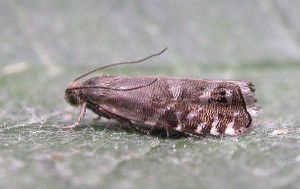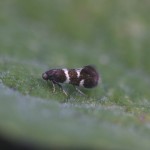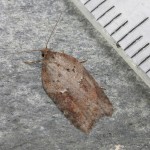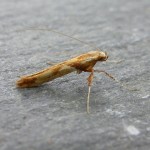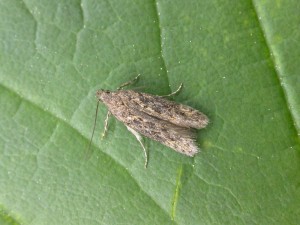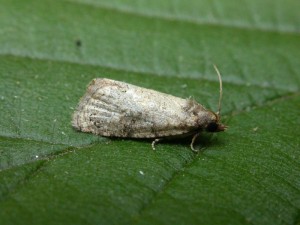<title>Suffolk Moths Blog » Identification Requests</title>
<atom:link href="http://suffolkmoths.org.uk/blog/index.php/category/identification-requests/feed/" rel="self" type="application/rss+xml"/>
<link>http://suffolkmoths.org.uk/blog</link>
<description>Topical information from the Suffolk Moth Group</description>
<lastBuildDate>Thu, 30 Apr 2020 14:24:25 +0000</lastBuildDate>
<language>en-US</language>
<sy:updatePeriod>hourly</sy:updatePeriod>
<sy:updateFrequency>1</sy:updateFrequency>
<generator>https://wordpress.org/?v=3.6.1</generator>
<item>
<title>“Yellow-spot Lift” anyone?</title>
<link>http://suffolkmoths.org.uk/blog/index.php/2018/06/26/yellow-spot-lift-anyone/</link>
<comments>http://suffolkmoths.org.uk/blog/index.php/2018/06/26/yellow-spot-lift-anyone/#comments</comments>
<pubDate>Tue, 26 Jun 2018 20:41:11 +0000</pubDate>
<dc:creator>paulb</dc:creator>
<category>
<![CDATA[ Identification Requests ]]>
</category>
<guid isPermaLink="false">http://suffolkmoths.org.uk/blog/?p=7589</guid>
<description>
<![CDATA[ Preferring the sofa by the lounge window has benefits. I get to watch the local House Sparrows go about their daily squabbles, there’s that fly-over bird of prey which will one day turn into a real Red Kite and, occasionally, … <a href="http://suffolkmoths.org.uk/blog/index.php/2018/06/26/yellow-spot-lift-anyone/">Continue reading <span class="meta-nav">→</span></a> ]]>
</description>
<content:encoded>
<![CDATA[ <p>Preferring the sofa by the lounge window has benefits. I get to watch the local House Sparrows go about their daily squabbles, there’s that fly-over bird of prey which will one day turn into a real Red Kite and, occasionally, I’m quick enough to dash out, pot in hand, to nab any micro that happens to alight on it. The latter occured on Sunday afternoon and, when it finally settled long enough to get a half decent view, I was intrigued. The photo below doesn’t quite do it justice but after two + hrs of trying I don’t think I’m going to improve on it. But which species is it? Looking through available literature and various websites I’ve decided it is one of the <em>Antispila sp’. </em>Until recently, <em>treitschkiella</em> was the obvious fit but that now appears to be only a recent addition to the British list and, instead, <em>p</em>e<i>tryi </i>is the more likely contender. The former is associated with [Cornelian] cherry while the latter is dogwood. I do have a dogwood in the front garden – of the variegated type – but my neighbour also has a cherry tree of some sort so I’m a little hesitant. I’ll hang on to the moth anyway but am interested to know what others think.</p>
<div id="attachment_7590" class="wp-caption alignleft" style="width: 160px"><a href="http://suffolkmoths.org.uk/blog/wp-content/uploads/2018/06/Antispila-sp-W-2018-06-24.jpg"><img class="size-thumbnail wp-image-7590" alt="Antispila sp' (W) 2018-06-24 (P.Bryant)" src="http://suffolkmoths.org.uk/blog/wp-content/uploads/2018/06/Antispila-sp-W-2018-06-24-150x150.jpg" width="150" height="150" /></a><p class="wp-caption-text">Antispila sp’ (W) 2018-06-24 (P.Bryant)</p></div>
<h2><em> </em></h2>
]]>
</content:encoded>
<wfw:commentRss>http://suffolkmoths.org.uk/blog/index.php/2018/06/26/yellow-spot-lift-anyone/feed/</wfw:commentRss>
<slash:comments>2</slash:comments>
...</item>
<item>
<title>Acleris sp – Any thoughts?</title>
<link>http://suffolkmoths.org.uk/blog/index.php/2018/03/25/acleris-sp-any-thoughts/</link>
<comments>http://suffolkmoths.org.uk/blog/index.php/2018/03/25/acleris-sp-any-thoughts/#comments</comments>
<pubDate>Sun, 25 Mar 2018 11:04:28 +0000</pubDate>
<dc:creator>paulb</dc:creator>
<category>
<![CDATA[ Identification Requests ]]>
</category>
<guid isPermaLink="false">http://suffolkmoths.org.uk/blog/?p=7428</guid>
<description>
<![CDATA[ See below photo of the Acleris sp’ taken in the garden on 23 Mar which I thought might be a candidate for schalleriana. Have kept the moth just in case. Any thoughts? ]]>
</description>
<content:encoded>
<![CDATA[ <p>See below photo of the Acleris sp’ taken in the garden on 23 Mar which I thought might be a candidate for <em>schalleriana</em>. Have kept the moth just in case. Any thoughts?</p>
<p><a href="http://suffolkmoths.org.uk/blog/wp-content/uploads/2018/03/Acleris-sp-W-23Mar18.jpg"><img class="alignleft size-thumbnail wp-image-7429" alt="Acleris sp (W) 23Mar18" src="http://suffolkmoths.org.uk/blog/wp-content/uploads/2018/03/Acleris-sp-W-23Mar18-150x150.jpg" width="150" height="150" /></a></p>
<h2><em> </em></h2>
]]>
</content:encoded>
<wfw:commentRss>http://suffolkmoths.org.uk/blog/index.php/2018/03/25/acleris-sp-any-thoughts/feed/</wfw:commentRss>
<slash:comments>4</slash:comments>
...</item>
<item>
<title>Q hemidactylella</title>
<link>http://suffolkmoths.org.uk/blog/index.php/2017/04/09/q-hemidactylella/</link>
<comments>http://suffolkmoths.org.uk/blog/index.php/2017/04/09/q-hemidactylella/#comments</comments>
<pubDate>Sun, 09 Apr 2017 09:47:10 +0000</pubDate>
<dc:creator>paulb</dc:creator>
<category>
<![CDATA[ Identification Requests ]]>
</category>
<guid isPermaLink="false">http://suffolkmoths.org.uk/blog/?p=6840</guid>
<description>
<![CDATA[ I took this Caloptilia sp’ on Wednesday night (5 April) and am guessing hemidactylella. What do others think? ]]>
</description>
<content:encoded>
<![CDATA[ <p>I took this Caloptilia sp’ on Wednesday night (5 April) and am guessing <em>hemidactylella</em>. What do others think?</p>
<div id="attachment_6843" class="wp-caption alignleft" style="width: 160px"><a href="http://suffolkmoths.org.uk/blog/wp-content/uploads/2017/04/Q-hemidactylella-W-05Apr17.jpg"><img class="size-thumbnail wp-image-6843" alt="Q: hemidactylella (W 05Apr17)" src="http://suffolkmoths.org.uk/blog/wp-content/uploads/2017/04/Q-hemidactylella-W-05Apr17-150x150.jpg" width="150" height="150" /></a><p class="wp-caption-text">Q: hemidactylella (W 05Apr17)</p></div>
]]>
</content:encoded>
<wfw:commentRss>http://suffolkmoths.org.uk/blog/index.php/2017/04/09/q-hemidactylella/feed/</wfw:commentRss>
<slash:comments>4</slash:comments>
...</item>
<item>
<title>news from kessingland</title>
<link>http://suffolkmoths.org.uk/blog/index.php/2016/07/18/news-from-kessingland/</link>
<comments>http://suffolkmoths.org.uk/blog/index.php/2016/07/18/news-from-kessingland/#comments</comments>
<pubDate>Mon, 18 Jul 2016 23:15:10 +0000</pubDate>
<dc:creator>Allan Eaton</dc:creator>
<category>
<![CDATA[ Identification Requests ]]>
</category>
<guid isPermaLink="false">http://suffolkmoths.org.uk/blog/?p=6328</guid>
<description>
<![CDATA[ Like several other people the highlight of the spring here was the 9th of may which produced a cydia strobilella and a platyedra subcinerea , the only other species of note was a cydia coniferana on the 9th of june. The couple of … <a href="http://suffolkmoths.org.uk/blog/index.php/2016/07/18/news-from-kessingland/">Continue reading <span class="meta-nav">→</span></a> ]]>
</description>
<content:encoded>
<![CDATA[ <p>Like several other people the highlight of the spring here was the 9th of may which produced a <em>cydia strobilella </em>and a <em>platyedra subcinerea</em> , the only other species of note was a <em>cydia coniferana</em> on the 9th of june. The couple of warm and still nights last week produced a bit of a micro bonanza , with moth of the night on the 7th being <em>Ectoedemia decentella (</em>as in woolpit!) ,mine was like a rabid panda and it took 20 mins and 2 escapes to get a rubbish photo . The star of the night on the 8th was probably a rather smart Gelechiid that looks like <em>Caryocolum junctella?. </em>Any expert opinion/re I.D.s welcome Allan<a href="http://suffolkmoths.org.uk/blog/wp-content/uploads/2016/07/P1010025.jpg"><img class="alignnone size-medium wp-image-6329" alt="9/5/16 cydia strobilella" src="http://suffolkmoths.org.uk/blog/wp-content/uploads/2016/07/P1010025-300x205.jpg" width="300" height="205" /></a><a href="http://suffolkmoths.org.uk/blog/wp-content/uploads/2016/07/P1010047.jpg"><img class="alignnone size-medium wp-image-6330" alt="9/5/16 platyedra subcinerea ?" src="http://suffolkmoths.org.uk/blog/wp-content/uploads/2016/07/P1010047-300x209.jpg" width="300" height="209" /></a><a href="http://suffolkmoths.org.uk/blog/wp-content/uploads/2016/07/P1010039.jpg"><img class="alignnone size-medium wp-image-6331" alt="7/6/16 Cydia coniferana" src="http://suffolkmoths.org.uk/blog/wp-content/uploads/2016/07/P1010039-300x199.jpg" width="300" height="199" /></a><a href="http://suffolkmoths.org.uk/blog/wp-content/uploads/2016/07/P1010075.jpg"><img class="alignnone size-medium wp-image-6332" alt="8/7/16 Caryocolum junctella" src="http://suffolkmoths.org.uk/blog/wp-content/uploads/2016/07/P1010075-300x198.jpg" width="300" height="198" /></a></p>
]]>
</content:encoded>
<wfw:commentRss>http://suffolkmoths.org.uk/blog/index.php/2016/07/18/news-from-kessingland/feed/</wfw:commentRss>
<slash:comments>5</slash:comments>
...</item>
<item>
<title>Mystery moth from the 20th.</title>
<link>http://suffolkmoths.org.uk/blog/index.php/2016/05/23/mystery-moth-from-the-20th/</link>
<comments>http://suffolkmoths.org.uk/blog/index.php/2016/05/23/mystery-moth-from-the-20th/#comments</comments>
<pubDate>Mon, 23 May 2016 19:36:57 +0000</pubDate>
<dc:creator>Neil</dc:creator>
<category>
<![CDATA[ Identification Requests ]]>
</category>
<guid isPermaLink="false">http://suffolkmoths.org.uk/blog/?p=6114</guid>
<description>
<![CDATA[ Here is a photo of my mystery gelechid moth from the other day, managed to get some decent shots of it this afternoon, not easy, a very flightly little b******d! My thoughts are that it is Scrobipalpa atriplicella. If it … <a href="http://suffolkmoths.org.uk/blog/index.php/2016/05/23/mystery-moth-from-the-20th/">Continue reading <span class="meta-nav">→</span></a> ]]>
</description>
<content:encoded>
<![CDATA[ <p>Here is a photo of my mystery gelechid moth from the other day, managed to get some decent shots of it this afternoon, not easy, a very flightly little b******d!<br />
My thoughts are that it is <em>Scrobipalpa atriplicella</em>. If it is that it would be a new moth for me. Other opinions welcomed.</p>
<p>Neil</p>
<div id="attachment_6115" class="wp-caption alignleft" style="width: 310px"><a href="http://suffolkmoths.org.uk/blog/wp-content/uploads/2016/05/DSCN8095.jpg"><img class="size-medium wp-image-6115" alt="Possible Scrobipalpa atriplicella" src="http://suffolkmoths.org.uk/blog/wp-content/uploads/2016/05/DSCN8095-300x225.jpg" width="300" height="225" /></a><p class="wp-caption-text">Possible Scrobipalpa atriplicella</p></div>
<p> </p>
]]>
</content:encoded>
<wfw:commentRss>http://suffolkmoths.org.uk/blog/index.php/2016/05/23/mystery-moth-from-the-20th/feed/</wfw:commentRss>
<slash:comments>2</slash:comments>
...</item>
<item>
<title>Conundrum.</title>
<link>http://suffolkmoths.org.uk/blog/index.php/2015/08/02/conundrum/</link>
<comments>http://suffolkmoths.org.uk/blog/index.php/2015/08/02/conundrum/#comments</comments>
<pubDate>Sun, 02 Aug 2015 17:54:13 +0000</pubDate>
<dc:creator>Neil</dc:creator>
<category>
<![CDATA[ Identification Requests ]]>
</category>
<guid isPermaLink="false">http://suffolkmoths.org.uk/blog/?p=5712</guid>
<description>
<![CDATA[ Thought I’d stick an image of this moth up, one that has got me head scratching at the moment. Caught last night in the garden, about the size of a lacunana. Colour is the same both sides of the moth. … <a href="http://suffolkmoths.org.uk/blog/index.php/2015/08/02/conundrum/">Continue reading <span class="meta-nav">→</span></a> ]]>
</description>
<content:encoded>
<![CDATA[ <p>Thought I’d stick an image of this moth up, one that has got me head scratching at the moment. Caught last night in the garden, about the size of a lacunana. Colour is the same both sides of the moth.</p>
<p>Any ideas?</p>
<p>Neil</p>
<div id="attachment_5713" class="wp-caption alignleft" style="width: 310px"><a href="http://suffolkmoths.org.uk/blog/wp-content/uploads/2015/08/Mystery.jpg"><img class="size-medium wp-image-5713" alt="Unknown tortrix moth." src="http://suffolkmoths.org.uk/blog/wp-content/uploads/2015/08/Mystery-300x225.jpg" width="300" height="225" /></a><p class="wp-caption-text">Unknown tortrix moth.</p></div>
]]>
</content:encoded>
<wfw:commentRss>http://suffolkmoths.org.uk/blog/index.php/2015/08/02/conundrum/feed/</wfw:commentRss>
<slash:comments>3</slash:comments>
...</item>
<item>
<title>Mistery insect</title>
<link>http://suffolkmoths.org.uk/blog/index.php/2015/07/08/mistery-insect/</link>
<comments>http://suffolkmoths.org.uk/blog/index.php/2015/07/08/mistery-insect/#comments</comments>
<pubDate>Wed, 08 Jul 2015 17:55:46 +0000</pubDate>
<dc:creator>Raymond Watson</dc:creator>
<category>
<![CDATA[ Identification Requests ]]>
</category>
<guid isPermaLink="false">http://suffolkmoths.org.uk/blog/?p=5627</guid>
<description>
<![CDATA[ I grow some non native Digitalis species in my garden from seed. An insect has been boring along the main stems killing the plants or just that spike. The exit hole for the frass is always just above a leaf … <a href="http://suffolkmoths.org.uk/blog/index.php/2015/07/08/mistery-insect/">Continue reading <span class="meta-nav">→</span></a> ]]>
</description>
<content:encoded>
<![CDATA[ <p>I grow some non native <em>Digitalis</em> species in my garden from seed. An insect has been boring along the main stems killing the plants or just that spike. The exit hole for the frass is always just above a leaf junction. The frass is reminiscent of lepidopterous frass. It is small. The hole is about 2 mm. Anyone have any ideas please?<a href="http://suffolkmoths.org.uk/blog/wp-content/uploads/2015/07/Mistery-insect.jpg"><img class="aligncenter size-medium wp-image-5628" alt="Mistery insect" src="http://suffolkmoths.org.uk/blog/wp-content/uploads/2015/07/Mistery-insect-300x225.jpg" width="300" height="225" /></a></p>
]]>
</content:encoded>
<wfw:commentRss>http://suffolkmoths.org.uk/blog/index.php/2015/07/08/mistery-insect/feed/</wfw:commentRss>
<slash:comments>0</slash:comments>
...</item>
<item>
<title>Going for a song</title>
<link>http://suffolkmoths.org.uk/blog/index.php/2014/11/14/going-for-a-song/</link>
<comments>http://suffolkmoths.org.uk/blog/index.php/2014/11/14/going-for-a-song/#comments</comments>
<pubDate>Fri, 14 Nov 2014 09:06:19 +0000</pubDate>
<dc:creator>Raymond Watson</dc:creator>
<category>
<![CDATA[ Identification Requests ]]>
</category>
<category>
<![CDATA[ Photography ]]>
</category>
<guid isPermaLink="false">http://suffolkmoths.org.uk/blog/?p=5155</guid>
<description>
<![CDATA[ I have upgraded my compound microscope (substantially). I am therefore offering the one I bought from Jon at ALS some 3 years ago for free except that you will have to arrange collection/delivery. Can I encourage anyone to take up … <a href="http://suffolkmoths.org.uk/blog/index.php/2014/11/14/going-for-a-song/">Continue reading <span class="meta-nav">→</span></a> ]]>
</description>
<content:encoded>
<![CDATA[ <p>I have upgraded my compound microscope (substantially). I am therefore offering the one I bought from Jon at ALS some 3 years ago for free except that you will have to arrange collection/delivery.</p>
<p>Can I encourage anyone to take up the dissection of Lepidoptera: confirm your Lesser Common Rustic, Rufous Minor, easily identify all those Coleophora, ‘difficult’ Gelechiids and some of those tricky tortricids? Boost your site list substantially!</p>
<p>Some further outlay is required though. If you do not possess one then a low powered dissecting microscope is required. ALS offers a variety. The one I use is the basic and costs less then £100. You will also need a minimum of equipment and chemicals. Two pairs of extra fine forceps, 3 staining blocks, KOH solution (I leave mine overnight in a flat bottomed glass specimen tube and dissect the following day) and some slides and cover slips. The microscope on offer comes with an attachment to take photographs however this is currently fitted with a ring for a Canon EOS so you may need a ring to fit your camera. If you take photos and don’t keep the slides then you need isopropyl alcohol and euparal essence to get a good quality slide. If you wish to keep the slides you will also need euparal and a slide box.</p>
<p>The dissection process is simple but you can start on larger ones to learn, otherwise I believe Jon does run training days. It just needs a little time during the off season.</p>
<p>Who can I entice? First come first served. Contact by email please or a message on this blog.</p>
]]>
</content:encoded>
<wfw:commentRss>http://suffolkmoths.org.uk/blog/index.php/2014/11/14/going-for-a-song/feed/</wfw:commentRss>
<slash:comments>0</slash:comments>
...</item>
<item>
<title>Conifer Cydia</title>
<link>http://suffolkmoths.org.uk/blog/index.php/2014/06/17/conifer-cydia/</link>
<comments>http://suffolkmoths.org.uk/blog/index.php/2014/06/17/conifer-cydia/#comments</comments>
<pubDate>Tue, 17 Jun 2014 14:37:48 +0000</pubDate>
<dc:creator>Paul Kitchener</dc:creator>
<category>
<![CDATA[ Identification Requests ]]>
</category>
<guid isPermaLink="false">http://suffolkmoths.org.uk/blog/?p=4697</guid>
<description>
<![CDATA[ I caught this at Iken Cliff on 3 June, at a site with plenty of Scots Pine. These Cydia species are certainly not a strong point of mine as I catch very few. FW length of 6mm. Anyone care to … <a href="http://suffolkmoths.org.uk/blog/index.php/2014/06/17/conifer-cydia/">Continue reading <span class="meta-nav">→</span></a> ]]>
</description>
<content:encoded>
<![CDATA[ <p><a href="http://suffolkmoths.org.uk/blog/wp-content/uploads/2014/06/Cydia-030614.jpg"><img class="alignnone size-medium wp-image-4698" alt="Cydia 030614" src="http://suffolkmoths.org.uk/blog/wp-content/uploads/2014/06/Cydia-030614-300x189.jpg" width="300" height="189" /></a></p>
<p>I caught this at Iken Cliff on 3 June, at a site with plenty of Scots Pine. These <em>Cydia</em> species are certainly not a strong point of mine as I catch very few. FW length of 6mm.</p>
<p>Anyone care to have a guess and put a name to it? Thanks for looking, Paul</p>
]]>
</content:encoded>
<wfw:commentRss>http://suffolkmoths.org.uk/blog/index.php/2014/06/17/conifer-cydia/feed/</wfw:commentRss>
<slash:comments>2</slash:comments>
...</item>
<item>
<title>Little black micro</title>
<link>http://suffolkmoths.org.uk/blog/index.php/2012/05/19/little-black-micro/</link>
<comments>http://suffolkmoths.org.uk/blog/index.php/2012/05/19/little-black-micro/#comments</comments>
<pubDate>Sat, 19 May 2012 19:39:38 +0000</pubDate>
<dc:creator>Mark Nowers</dc:creator>
<category>
<![CDATA[ Identification Requests ]]>
</category>
<guid isPermaLink="false">http://suffolkmoths.org.uk/blog/?p=1191</guid>
<description>
<![CDATA[ Stumbling around Hintlesham Woods at 6 in the morning last Sunday doing a bird survey, I stopped at one of the ponds to see if any newts had laid eggs on the surface vegetation. They hadn’t, but I did notice … <a href="http://suffolkmoths.org.uk/blog/index.php/2012/05/19/little-black-micro/">Continue reading <span class="meta-nav">→</span></a> ]]>
</description>
<content:encoded>
<![CDATA[ <p><span style="font-size: small;">Stumbling around Hintlesham Woods at 6 in the morning last Sunday doing a bird survey, I stopped at one of the ponds to see if any newts had laid eggs on the surface vegetation. They hadn’t, but I did notice a micro sat on a blade of grass overhanging the water. With my inexperienced micro-hat on it I thought that it was a female longhorn, but on further perusal of literature I think it was <em>Micropterix calthella. </em>Basically it was black, with a ginger crown. Later the same day in Wolves Wood, I found another, again on pondside vegetation. Be grateful for validation or comment.</span></p>
]]>
</content:encoded>
<wfw:commentRss>http://suffolkmoths.org.uk/blog/index.php/2012/05/19/little-black-micro/feed/</wfw:commentRss>
<slash:comments>1</slash:comments>
...</item>
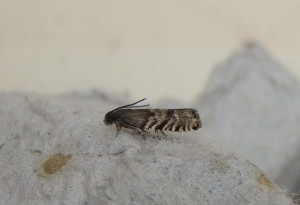
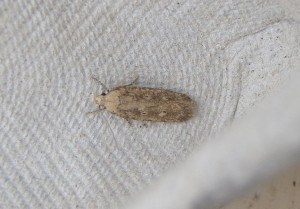
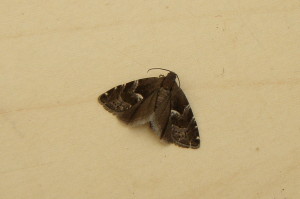
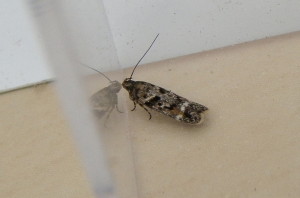 ]]>
]]> ]]>
]]>